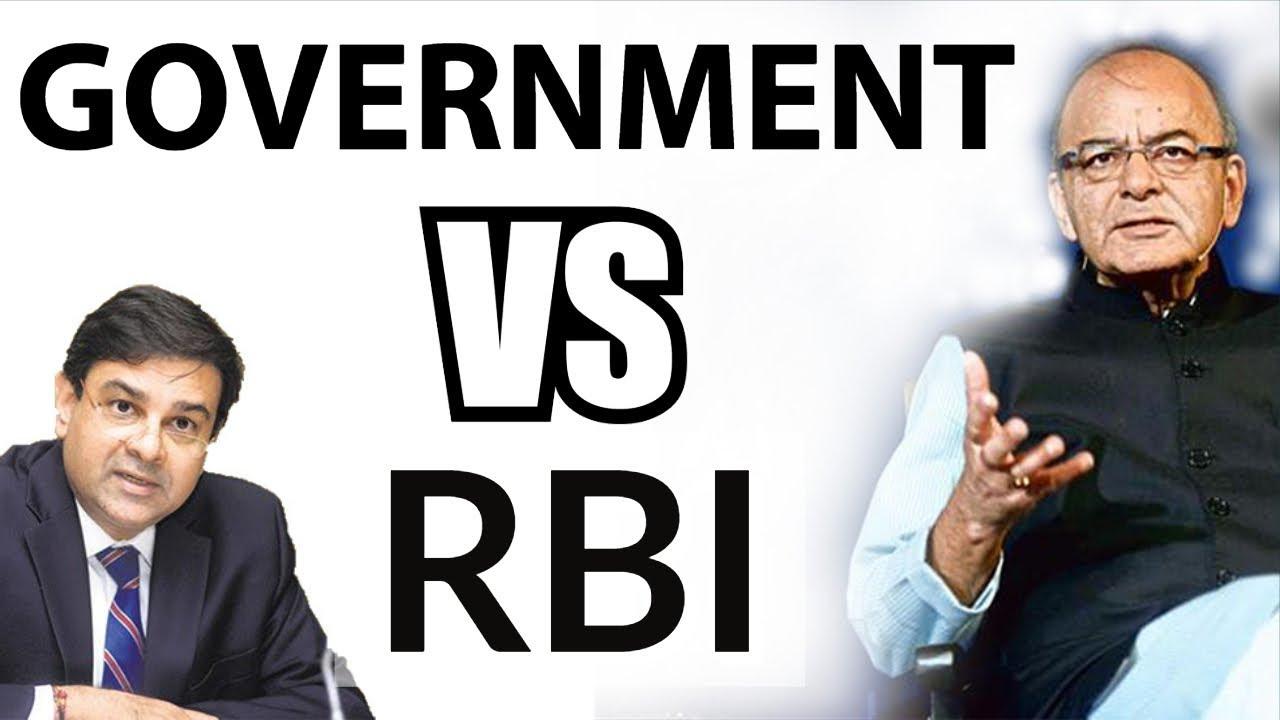Table of Contents
RBI AND THE GOVERNMENT
- Disagreements and differences between the central bank and the Centre are traditional and often seen as inevitable.
- Former RBI governor Y.V. Reddy once joked: “Yes I am independent and the RBI is an autonomous institution. This, I am saying after getting permission from the Finance Minister”.
RBI AND THE FINANCE MINISTRY
RBI – main function is Monetary policy. Monetary policy involves changing the interest rate and influencing the money supply. Finance Minister’s main function is Fiscal policy. Fiscal policy involves the government changing tax rates and levels of government spending to influence aggregate demand in the economy.
ISSUES BETWEEN RBI AND GOVT.
Regulation of PSBs The influence or non-influence of the RBI over public sector banks (PSBs) has been a contentious issue that has played out in two different ways. The first was in the aftermath of the Nirav Modi-Punjab National Bank scam, with finance minister Arun Jaitley laying the majority of the blame for the controversy at the door of “supervisory agencies”, a reference that many saw as the government indirectly rebuking the RBI.
ISSUES BETWEEN RBI AND GOVT.
Diluting PCA framework ‘Prompt corrective action’ (PCA) framework, a set of rules that central bank applies for weaker banks that have serious or structural problems. As it stands right now, 11 state-owned lenders are under restrictions placed by the PCA framework.
ISSUES BETWEEN RBI AND GOVT.
Diluting PCA framework The Centre is clear in what it wants: if weaker banks are allowed to lend again, it could boost credit growth in certain areas of the Indian economy. The RBI’s defence is also equally clear: if the Centre wants stateowned banks to exit PCA, as a majority owner, it needs to infuse more capital, which is something the Modi government is reluctant to do beyond a certain point.
ISSUES BETWEEN RBI AND GOVT.
Dividend Over the last few years, the Centre’s attempt to withdraw capital and reserves from the central bank’s balance sheet has triggered public debate, with former chief economic adviser Arvind Subramanian also in favour of the move. The Reserve Bank of India (RBI) on Friday paid a dividend of Rs 30,659 to the central government. This was less than half of the Rs 65,876 crore that was transferred in FY 2015-16.
ISSUES BETWEEN RBI AND GOVT.
Dividend Why does the RBI pay a dividend? The RBI was founded in 1934 and has been operating according to the Reserve Bank of India Act of 1934. Chapter 4, section 47 of the Act, titled “Allocation of Surplus funds” mandates for any profits made by the RBI from its operations to be sent to the Centre.
WHAT IS HAPPENING NOW?
The ongoing spat between the government and the Reserve Bank of India has left many on tenterhooks. The central bank, which is meant to function autonomously and independently, has alleged that the government has been trying to interfere in its functioning.
THIS COULD GET WORSE
This is a serious allegation. In a speech on October 26, RBI Deputy Governor Viral Acharya warned that undermining the autonomy and independence of the central bank could prove to be “potentially catastrophic”.
GOVERNMENT’S BIG MOVE
On October 31, India woke up to multiple media reports saying the government has decided to invoke Section 7 of the RBI Act in order to get its way.
WHAT IS SECTION 7?
Section 7 of the RBI Act, when invoked, allows the government to consult with and give instructions to the Governor of the RBI on certain issues that it believes are serious and are in public interest. Interestingly, Section 7 has never been invoked in independent India.
BIG IMPACT
The government invoking Section 7 would essentially result in the central bank losing its autonomy temporarily. Even in the country’s darkest days as an economy, say in 1991 or in the period that followed the 2008 financial crisis, the government never went down that road.
























 WhatsApp
WhatsApp